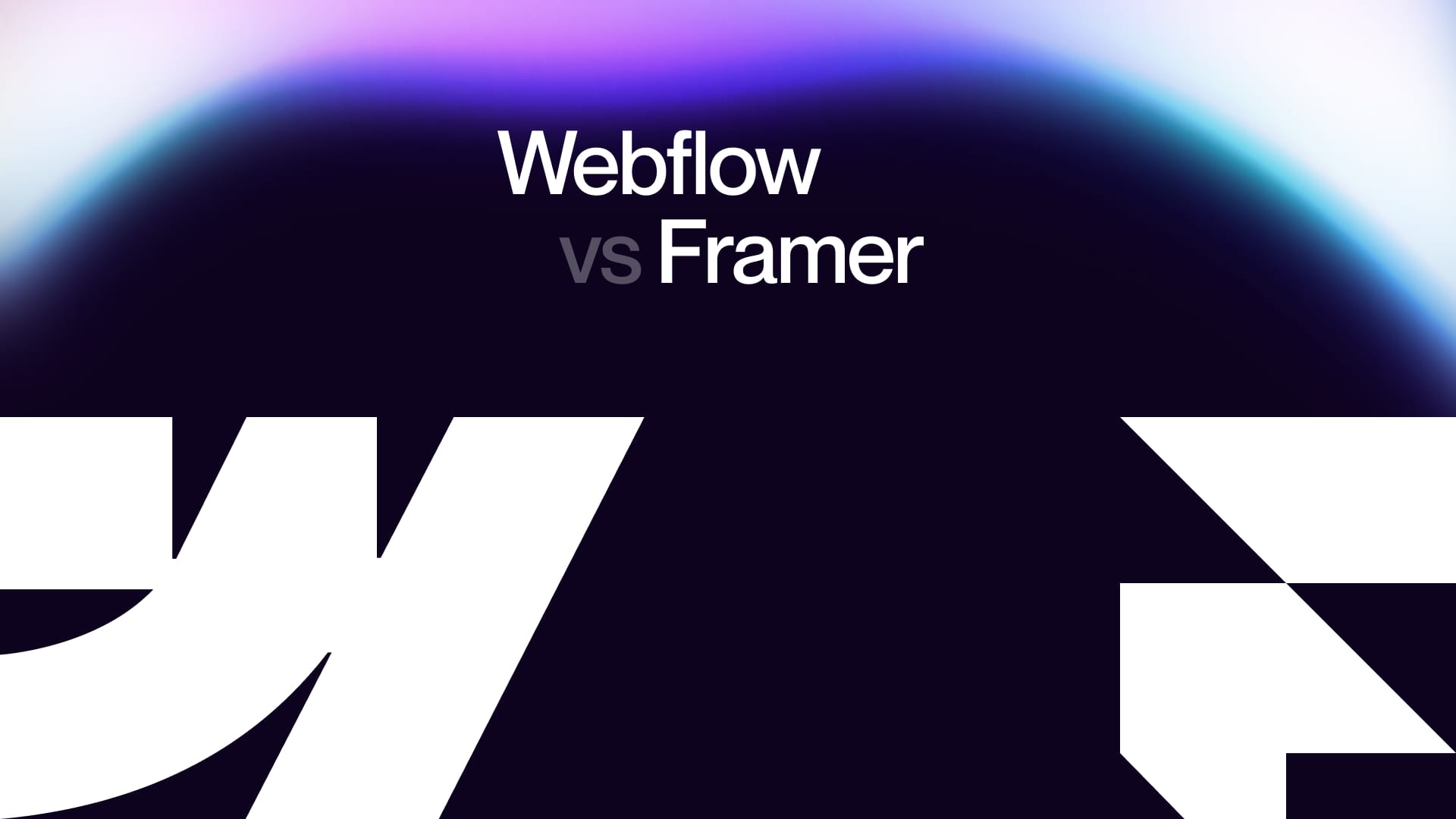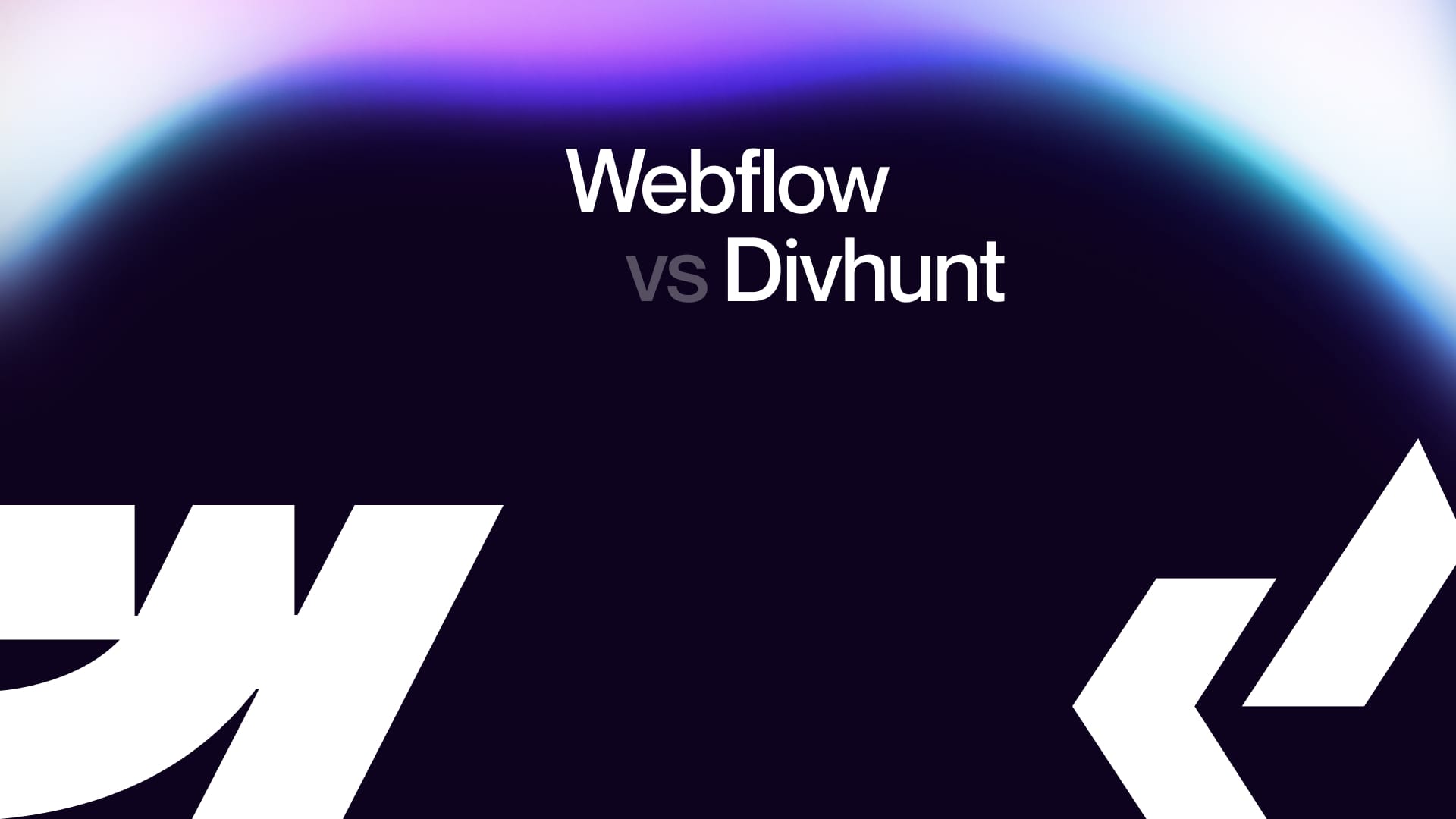When it comes to web design platforms, Webflow stands out as the leading contender in the industry.
It offers a wide range of features, an intuitive interface, and impressive design capabilities, making it the perfect choice for businesses aiming to build visually striking websites.
In this article, we will delve into the advantages of Webflow and conduct a thorough comparison with Framer, a well-known alternative.
By examining these aspects, we will uncover why Webflow emerges as the superior option for contemporary businesses.
Webflow: The All-in-One Solution
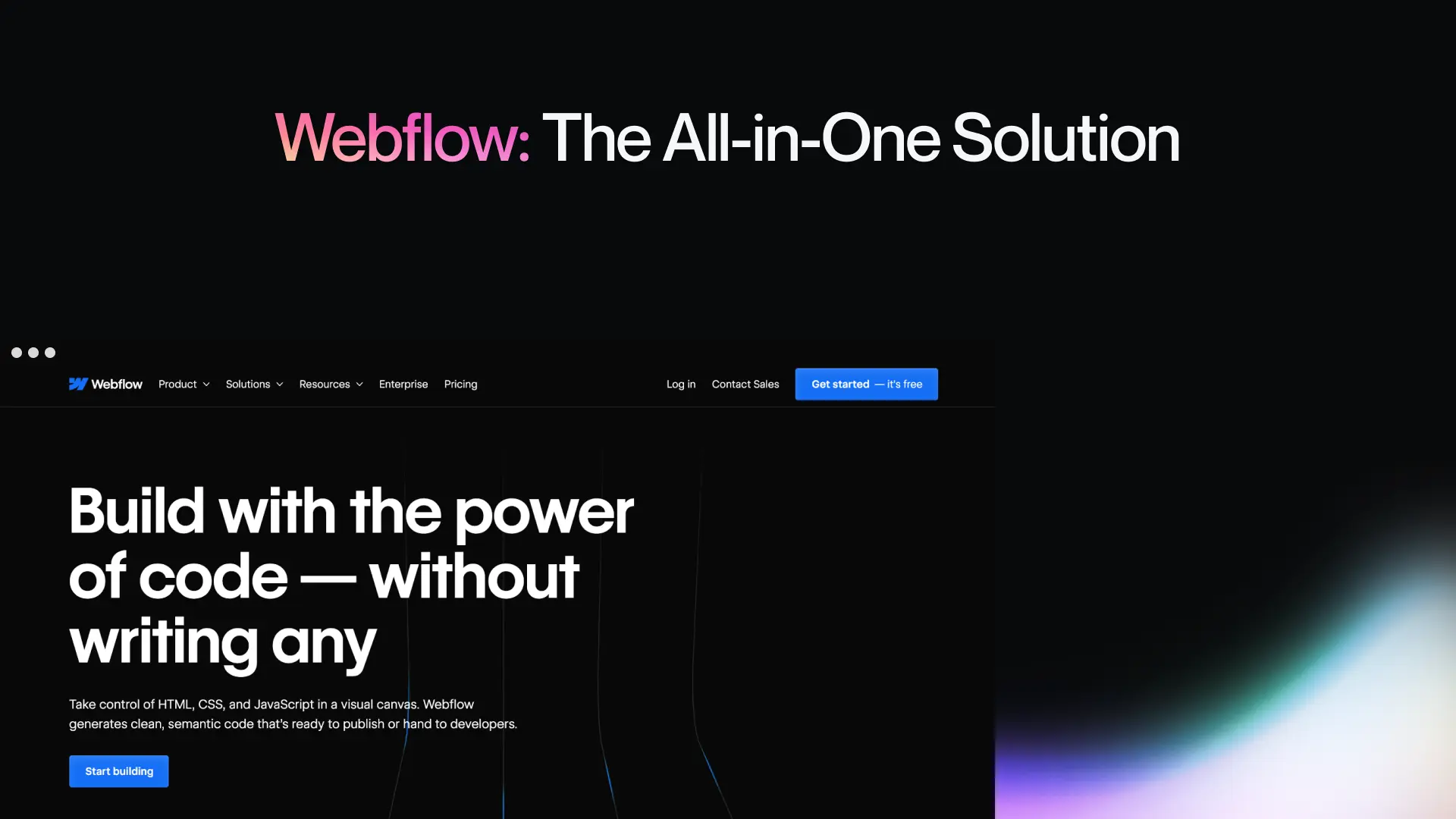
Do you know that Webflow revolutionized the field of web design by offering a comprehensive and all-encompassing approach?
It presents users with an integrated solution that empowers them to create, design, and launch their websites seamlessly, all within a single platform.
One of the standout features of Webflow is its intuitive visual editor, which sets it apart from traditional web design methods.
This powerful tool allows designers and developers to craft visually stunning websites without the requirement of extensive coding knowledge.
With a simple and user-friendly interface, users can effortlessly manipulate elements, customize layouts, and achieve pixel-perfect designs with ease.
Gone are the days of juggling multiple tools and platforms throughout the web design process.
Webflow consolidates everything into one cohesive environment, streamlining the entire workflow.
This not only saves time but also eliminates the frustration of navigating between various software and services.
With Webflow, designers can focus on their creative vision without being hindered by technical barriers.
By offering a holistic approach to web design, Webflow empowers professionals and businesses to bring their ideas to life in a streamlined and efficient manner.
From concept to launch, this platform ensures a smooth and hassle-free experience, making it a top choice for both beginners and seasoned web designers alike.
Webflow vs. Framer: Unparalleled Design Flexibility
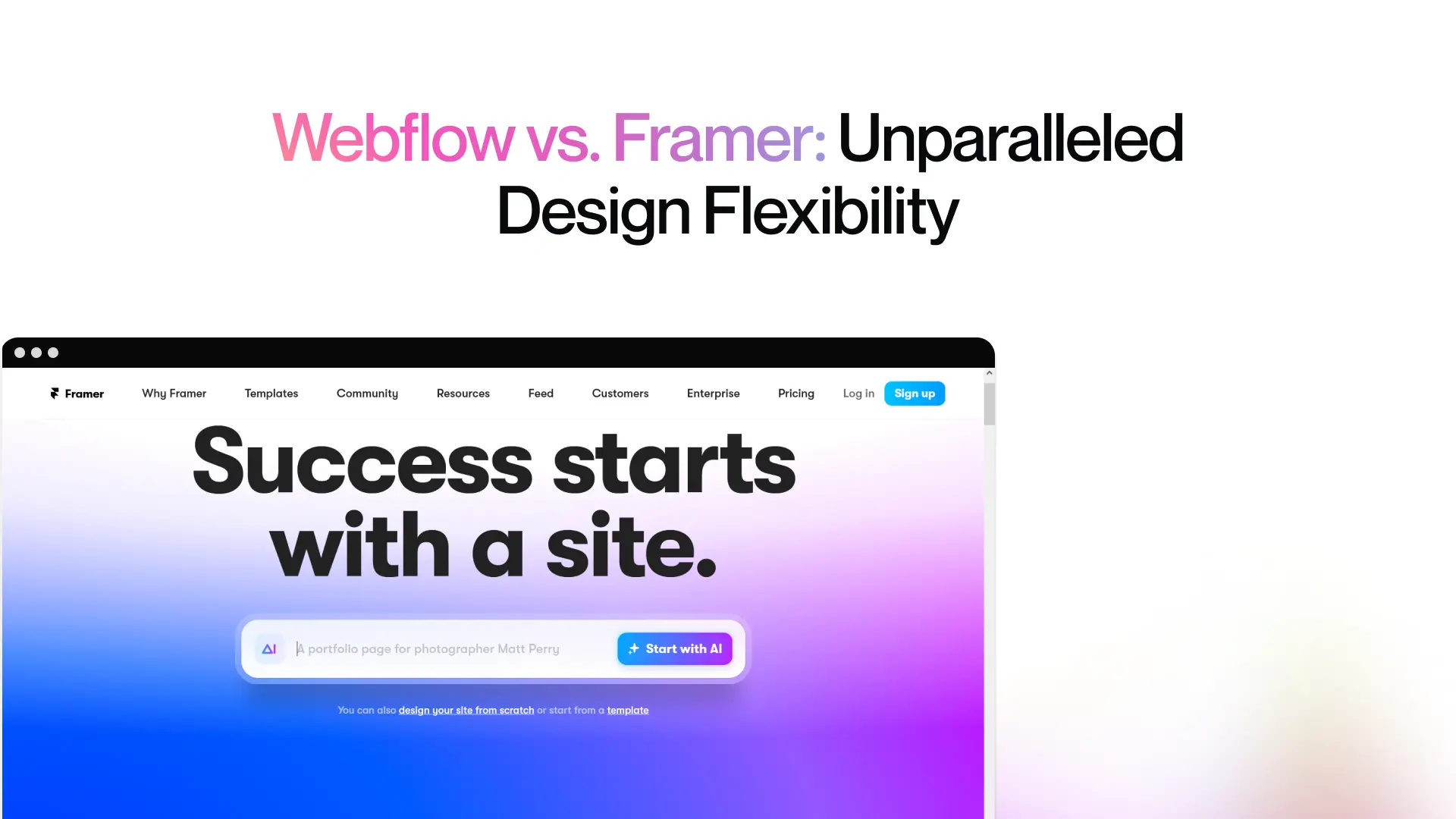
Despite Framer being acknowledged as a viable alternative to Webflow, it fails to measure up when it comes to design flexibility.
Webflow, on the other hand, takes design control to new heights with its powerful visual editor.
Webflow's visual editor provides an unrivaled level of control over design elements, granting users the freedom to customize every aspect of their website.
This includes fine-tuning typography, selecting color schemes, implementing captivating animations, and creating interactive elements.
Designers using Webflow can truly bring their visions to life, leveraging a vast array of tools and features to craft unique and visually stunning websites that resonate with their brand and target audience.
In contrast, Framer's customization is limiting the creative possibilities for users.
The lack of comprehensive design control may hinder designers from fully expressing their creativity and achieving the desired aesthetic.
Without the same level of flexibility and freedom offered by Webflow, designers using Framer may find themselves constrained by pre-defined templates and limited customization options, potentially compromising the uniqueness and impact of their websites.
The Power of Webflow CMS
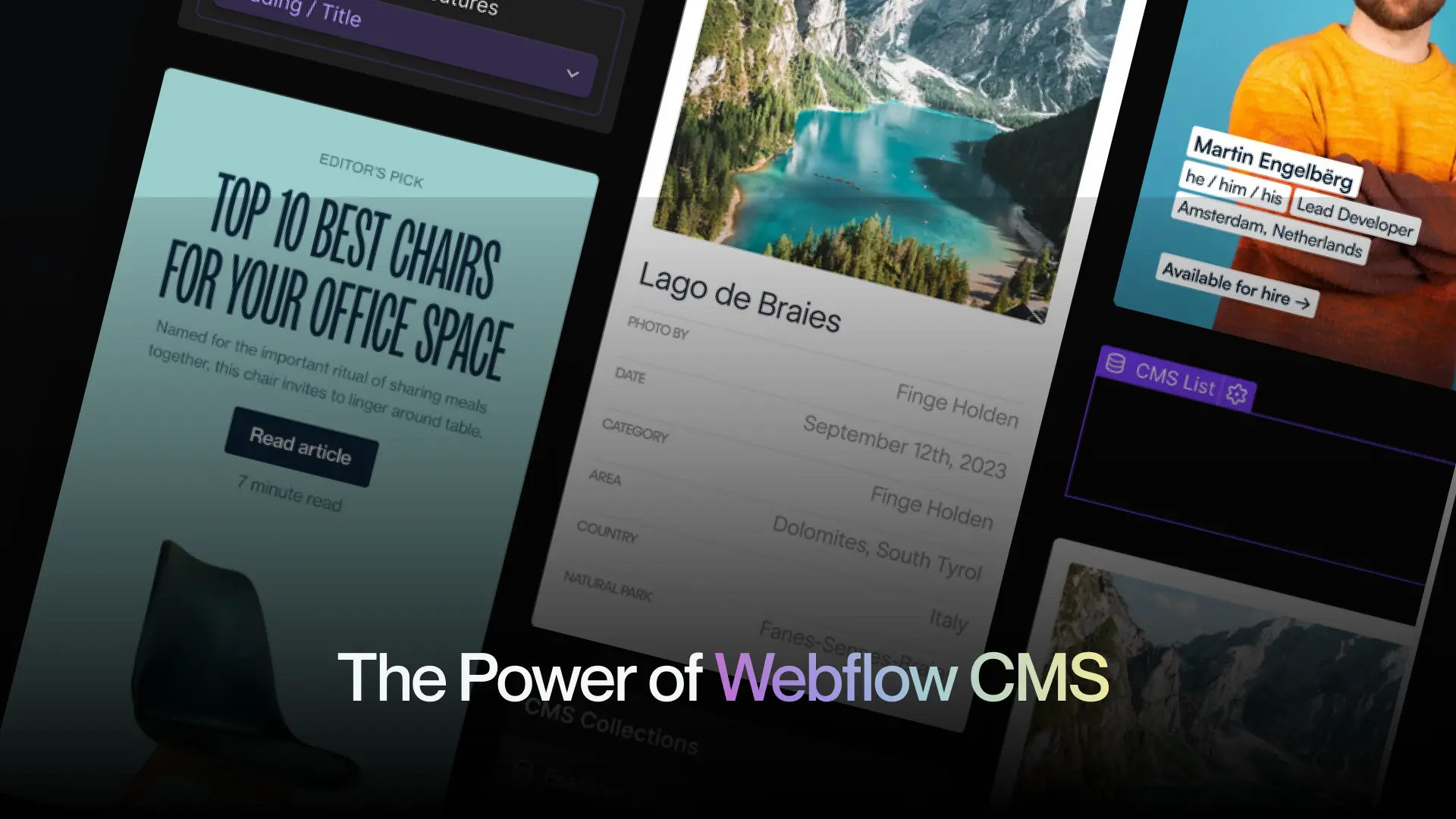
Webflow's content management system (CMS) is a revolutionary tool that caters to the needs of businesses requiring dynamic content management.
This feature sets Webflow apart from Framer, as it lacks a native CMS integration.
The Webflow CMS is a robust solution that enables users to create and manage content with unparalleled ease.
With its intuitive interface, businesses can effortlessly enter and edit content, ensuring that their websites stay up-to-date and relevant.
This eliminates the need to rely on external platforms or third-party services for content management, streamlining the entire process and saving valuable time and resources.
The CMS offered by Webflow empowers businesses to maintain control over their content, allowing them to make instant updates, add new pages or posts, and manage media files seamlessly.
Whether it's adding new products to an e-commerce site, publishing blog articles, or updating portfolio projects, Webflow's CMS provides a user-friendly experience that simplifies content management tasks.
The Webflow CMS offers extensive customization options, allowing businesses to structure and organize their content in a way that aligns with their unique needs and branding.
Users can create custom fields, define content relationships, and establish dynamic lists and collections, providing a flexible and scalable framework for content management.
Responsive Design Made Easy
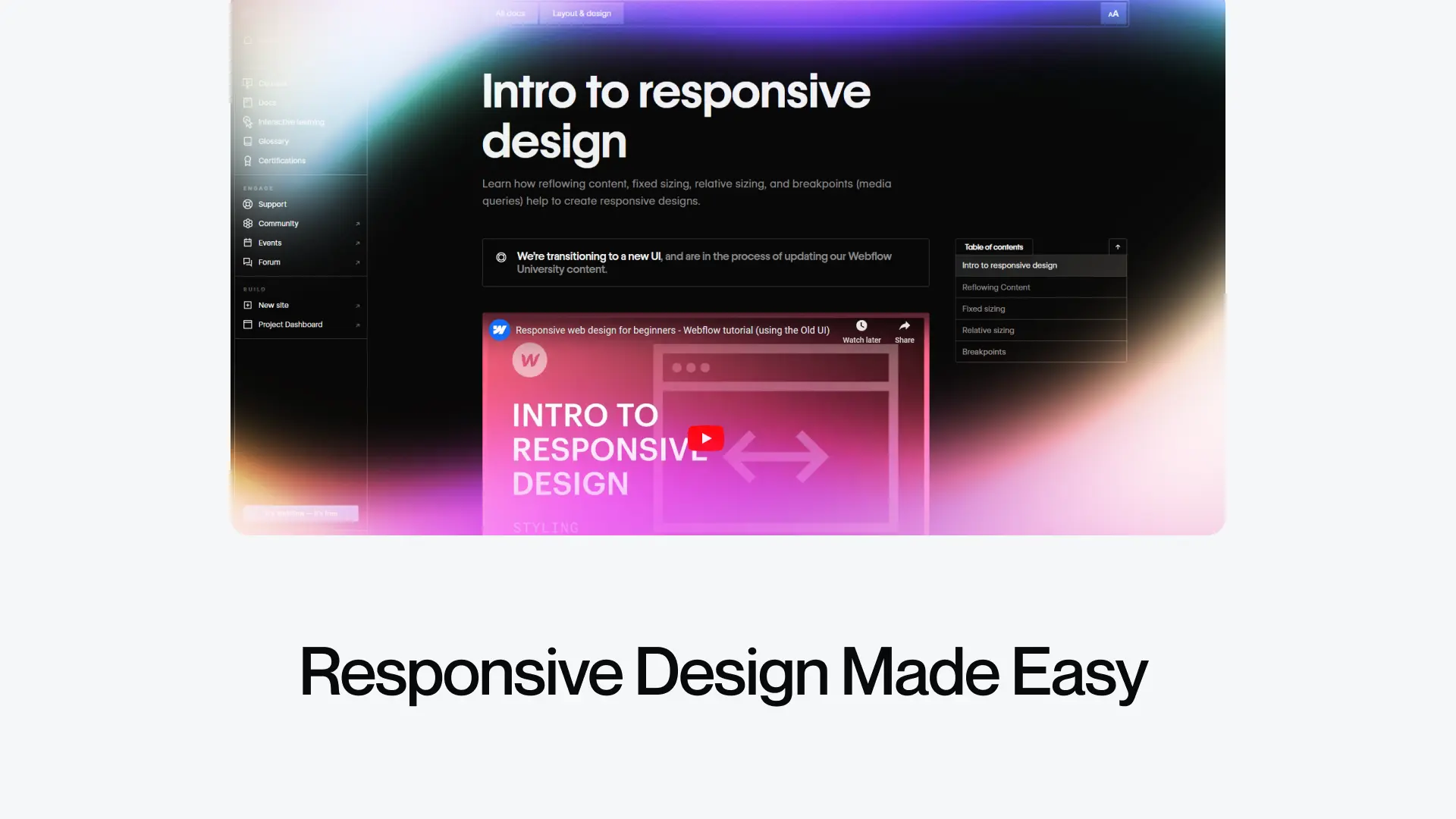
Webflow's visual editor empowers designers to effortlessly create responsive layouts that adapt beautifully to different screen sizes and devices.
This ensures that websites built with Webflow not only look visually stunning but also function flawlessly across desktops, tablets, and smartphones.
By eliminating the need for external tools or complicated coding, Webflow simplifies the process of achieving responsive design, saving designers time and effort.
Framer falls short in terms of responsiveness, often necessitating additional coding or reliance on plugins to achieve a mobile-friendly design.
This additional complexity can hinder the efficiency of the design process and may lead to suboptimal results in terms of user experience on different devices.
Webflow's seamless integration of responsive design capabilities gives it a significant advantage over Framer.
The platform's intuitive interface and powerful tools enable designers to create websites that dynamically adapt to the ever-evolving landscape of devices and screen sizes.
By prioritizing responsive design, Webflow ensures that businesses can effectively reach and engage their audience across various platforms, enhancing user satisfaction and ultimately driving better business outcomes.
Integrations & Extensibility
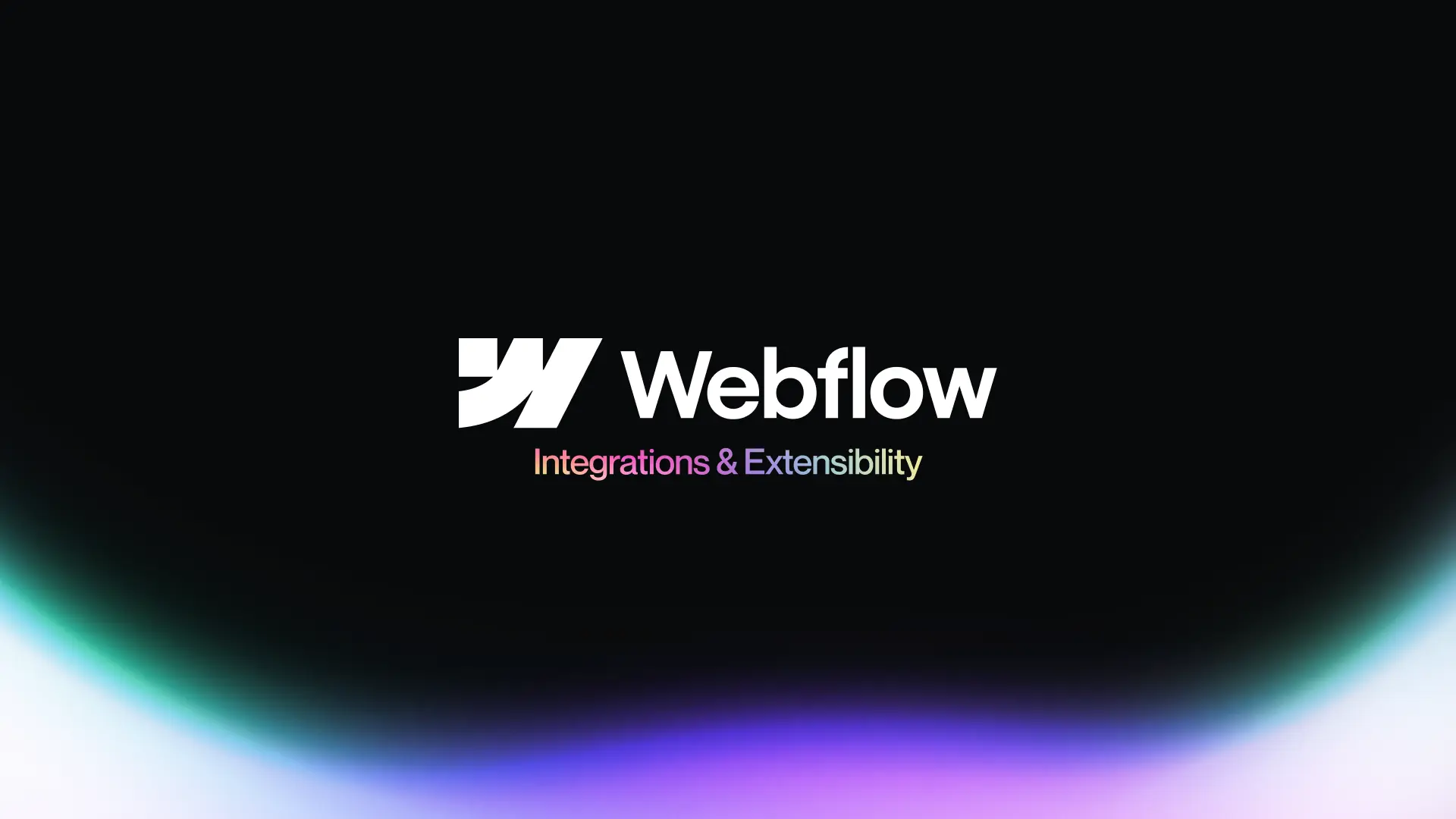
A standout feature of Webflow lies in its robust ecosystem of integrations and extensibility, which sets it apart as a versatile web design platform.
Webflow empowers users by offering seamless integration capabilities with a diverse array of third-party tools and services.
This allows businesses to enhance their website's functionality and unlock additional features.
Whether it's integrating with popular e-commerce platforms to facilitate online transactions, connecting with marketing automation tools for efficient campaign management, or incorporating analytics solutions to gain valuable insights, Webflow provides a comprehensive integration experience.
The breadth and depth of Webflow's integration ecosystem give users unparalleled flexibility and customization options.
By seamlessly connecting their website to various tools and services, businesses can enhance their online presence, streamline workflows, and deliver a more tailored and personalized user experience.
Framer may offer some integrations, but it falls short when it comes to the breadth and depth of its ecosystem.
This limitation restricts the extensibility of Framer, preventing users from fully leveraging a wide range of tools and services to enhance their website's functionality and meet their specific business needs.
Webflow's thriving ecosystem of integrations and extensibility ensures that businesses can create websites that go beyond the standard features and cater to their unique requirements.
It provides the flexibility and scalability necessary for businesses to adapt and grow in a rapidly evolving digital landscape.
Final Thoughts
When comparing Webflow and Framer as web design platforms, it becomes evident that Webflow stands out as the superior choice for businesses in search of a powerful and user-friendly solution.
Its comprehensive range of features, unparalleled design flexibility, powerful content management system (CMS), responsive design capabilities, and extensive ecosystem of integrations position Webflow as the ultimate option.
Webflow offers a vast array of features that enable businesses to create visually stunning and highly functional websites.
Its intuitive visual editor grants users unparalleled control over design elements, allowing for limitless customization possibilities.
The responsive design capabilities of Webflow ensure that websites look impressive across all devices, enhancing the user experience and accessibility.
Webflow also excels in terms of search engine optimization (SEO) by incorporating SEO-friendly features that enhance website visibility and rankings.
Webflow proves to be the ideal choice for businesses looking to establish a compelling online presence.
Embrace the power of Webflow to create stunning websites that captivate your audience and elevate your business to new heights.
